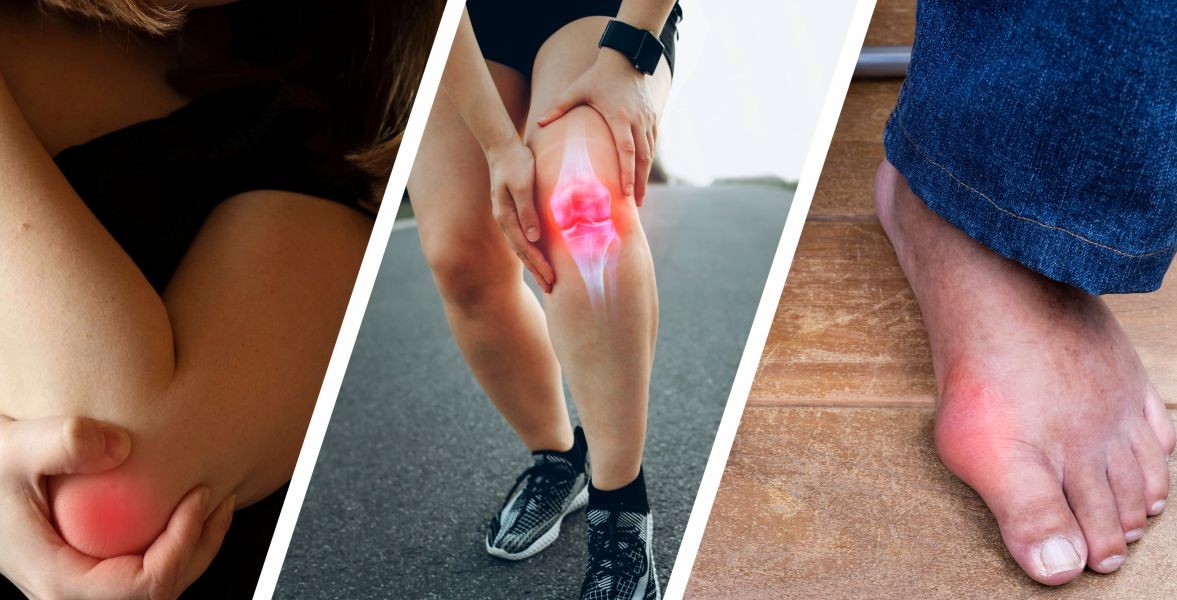Published - Sat, 02 Jul 2022

HOW AND WHAT HAPPENS IF URIC ACID IS HIGH?
Blood contains the waste substance uric acid. It is produced through the body's breakdown of substances known as purines. The majority of uric acid is dissolved in the blood, travels via the kidneys, and is excreted in the urine. When your kidneys are unable to remove uric acid effectively, a high uric acid level may develop. A disease known as hyperuricemia will develop if there is an excessive amount of uric acid in the body.
What happens in a hyperuricemic state?
Urate (or uric acid) crystals may occur as a result of hyperuricemia. These crystals may accumulate in the tissues and joints, where they may cause a variety of medical complications. These include gout, a particularly painful form of arthritis. They may also become lodged there and develop kidney stones. High uric acid levels can potentially cause permanent bone, joint, and tissue damage as well as kidney and heart disease if left untreated.
What are the causes of hyperuricemia?
A high uric acid level typically results from ineffective uric acid elimination by your kidneys. Diuretics (water retention relievers), excessive alcohol consumption, hypothyroidism (underactive thyroid), immune-suppressing medications, niacin or vitamin B-3, obesity, psoriasis, renal insufficiency (inability of the kidneys to filter waste), tumor lysis syndrome (a rapid release of cells into the blood caused by certain cancers or by chemotherapy for those cancers), and genetics (inherited tendencies) are some factors that may contribute to a high uric acid level in your blood.
Several purine-rich foods and beverages can raise uric acid levels. Red meat, organ meats like liver, seafood (particularly salmon, shrimp, lobster, and sardines), alcohol, and foods containing high fructose corn syrup (especially beer, including non-alcoholic beer).
A person with excessive uric acid doesn't necessarily always show symptoms. However, individuals with related severe medical disorders or persistent uric acid increases in the blood may have symptoms. Increased blood uric acid levels eventually cause tissue buildup and health complications. Several health conditions might abruptly develop in the body:
Gout (inflammation of a joint) is characterized as Redness, soreness, and swelling around the joints, decreased range of motion, severe joint pain (particularly in the first 12 to 24 hours), and joint pain that lasts a few days to a few weeks and spreads to additional joints over time.
Formation of kidney stones; symptoms include: Back pain, pain in and around the flank, frequent urination, nausea, vomiting, alterations in urine (cloudiness, presence of blood, strange smell), fever, and chills are some of the symptoms.
Levels of Uric Acid
Low, normal, and high blood uric acid levels are shown in the following table. The units used throughout are milligrams per deciliter (mg/dl).
Table 1: Levels of Uric acid
Uric acid level | Males | Females |
| Low | below 2.5 mg/dl | below 1.5 mg/dl |
| Normal | 2.5–7.0 mg/dl | 1.5–6.0 mg/dl |
| High | above 7.0 mg/dl | above 6.0 mg/dl |
Created by
Comments (0)
Search
Popular categories
Latest blogs

All you need to know about Syphilis
Tue, 15 Nov 2022

What is Pemphigus Vulgaris?
Tue, 15 Nov 2022

Know about Scorpion Stings
Sat, 12 Nov 2022

Write a public review